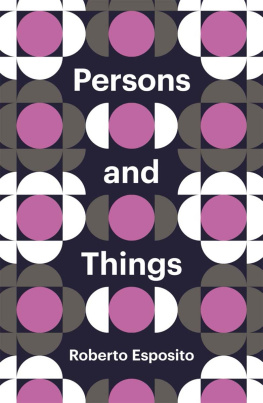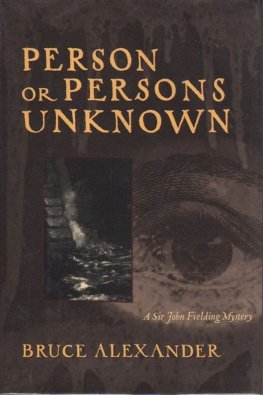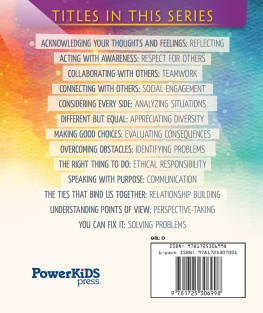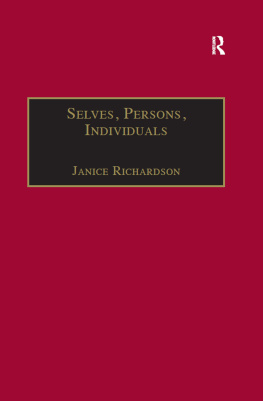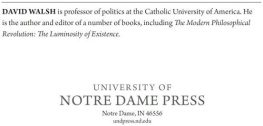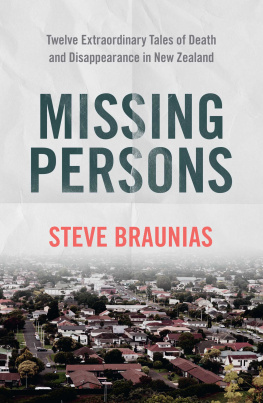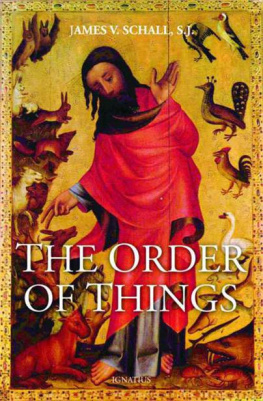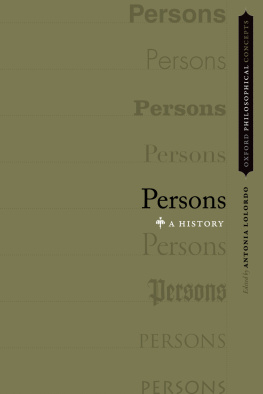Contents
Guide
Pages

Persons and Things
From the Bodys Point of View
Roberto Esposito
Translated by Zakiya Hanafi
polity
Theory Redux
Series editor: Laurent de Sutter
My thanks to Zakiya Hanafi for the linguistic skill, interpretive intelligence, and unparalleled care she has brought to translating this and other books of mine.
Copyright Roberto Esposito 2015
The right of Roberto Esposito to be identified as Author of this Work has been asserted in accordance with the UK Copyright, Designs and Patents Act 1988.
First published in 2015 by Polity Press
Polity Press
65 Bridge Street
Cambridge CB2 1UR, UK
Polity Press
350 Main Street
Malden, MA 02148, USA
All rights reserved. Except for the quotation of short passages for the purpose of criticism and review, no part of this publication may be reproduced, stored in a retrieval system, or transmitted, in any form or by any means, electronic, mechanical, photocopying, recording or otherwise, without the prior permission of the publisher.
ISBN-13: 978-0-7456-9068-1
A catalogue record for this book is available from the British Library.
Library of Congress Cataloging-in-Publication Data
Esposito, Roberto, 1950
[Persone e le cose. English]
Persons and things : from the bodys point of view / Roberto Esposito.
pages cm
ISBN 978-0-7456-9064-3 (hardback) -- ISBN 978-0-7456-9065-0 (pbk.) 1. Individualism. 2. Persons. 3. Property. 4. Materialism. 5. Human body (Philosophy) I. Title.
B824.E8613 2015
110--dc23

The translation of this work has been funded by SEPS
Segretariato Europeo per le Pubblicazioni Scientifiche Via Val dAposa 7 - 40123 Bologna - Italy
The publisher has used its best endeavors to ensure that the URLs for external websites referred to in this book are correct and active at the time of going to press. However, the publisher has no responsibility for the websites and can make no guarantee that a site will remain live or that the content is or will remain appropriate.
Every effort has been made to trace all copyright holders, but if any have been inadvertently overlooked the publisher will be pleased to include any necessary credits in any subsequent reprint or edition.
For further information on Polity, visit our website: politybooks.com
Introduction
If there is one assumption that seems to have organized human experience from its very beginnings it is that of a division between persons and things. No other principle is so deeply rooted in our perception and in our moral conscience as the conviction that we are not things because things are the opposite of persons. Yet this idea, which appears almost naturally obvious to us, is actually the outcome of a long disciplining process that ran through ancient and modern history, molding them in its course. When the Roman jurist Gaius, in his Institutes, identified persons and things as the two categories that along with actions constitute the subject matter of the law, he did nothing more than give legal value to a criterion that was already widely accepted. Since Roman times, this distinction has been reproduced in all modern codifications, becoming the presupposition that serves as the implicit ground for all other types of thought for legal but also philosophical, economic, political, and ethical reasoning. A watershed divides the world of life, cutting it into two areas defined by their mutual opposition. You either stand on this side of the divide, with the persons, or on the other side, with the things: there is no segment in between to unite them.
Yet, anthropological studies tell a different story, one set in societies where people and things form part of the same horizon, where they not only interact but actually complement each other. More than mere tools or objects owned as private property, things constitute the filter through which humans, not yet modeled by the dispositif of the person, enter into relationship with each other. Connected in a practice that precedes the segmentation of the social life into the separate languages of religion, economy, and law, these societies view things as animate beings with the capacity to affect their destiny, and therefore deserving of special care. To get a sense of these societies, we cant look at them from the angle of persons or things; we need to examine them instead from the point of view of the body. This is the sentient place where things seem to interact with people, to the point of becoming a sort of symbolic and material extension of them. To get an idea of this, think about what some works of art or objects of technology mean to us today: they seem to be endowed with a life of their own that in some way communicates with ours.
This parallel between ancient societies and contemporary experience is in itself proof of how nothing disappears from history without leaving traces, although becoming reproduced in modes that are often not comparable. It also demonstrates the fact that the modern horizon, genetically composed of the confluence between Greek philosophy, Roman law, and the Christian conception, does not exhaust the arc of possibilities. In the dichotomous model that has long opposed the world of things to the world of persons, during the era of its decline, a crack appears to be showing. The more our technological objects, with the know-how that has made them serviceable, embody a sort of subjective life, the less we can squash them into an exclusively servile function. At the same time, through the use of biotechnologies, people who at one time appeared as individual monads may now house inside themselves elements that come from other bodies and even inorganic materials. The human body has thus become the flow channel and the operator, certainly a delicate one, of a relation that is less and less reducible to a binary logic.
But before tracing out a different way of looking at things and persons from the bodys point of view, we must reconstruct the coordinates that for so long compressed and continue to compress human experience into the confines of this exclusionary binary equation. The reason for doing so is because the bodily dimension is exactly what was excluded. This did not take place in the domain of practices, of course, which has always revolved around the body; nor in the domain of power, which is measured by the distinct capacity to control what the body produces. But in the domain of knowledge the body certainly was excluded, especially in legal and philosophical thought, which, generally speaking, has aimed to eliminate its specificity. Because it falls neither under the category of person nor under that of thing, the body has long oscillated between one and the other without finding a permanent place. In the Roman legal conception as well as in the Christian theological one, the person was never coextensive with the living body that embodied it. Similarly, in the ancient and modern philosophical traditions of the West, the thing has been somehow decorporealized by being dissolved into the idea or into the word. In both cases, the division in principle between person and thing is reproduced once again in each of them, separating them from their bodily content.
As regards person, the ancient Greek term from which it originates explains the gap that separates it from the living body: just as a mask never fully adheres to the face that it covers, similarly the legal person does not coincide with the body of the human being to which it refers. In Roman legal doctrine, rather than indicating the human being as such,

